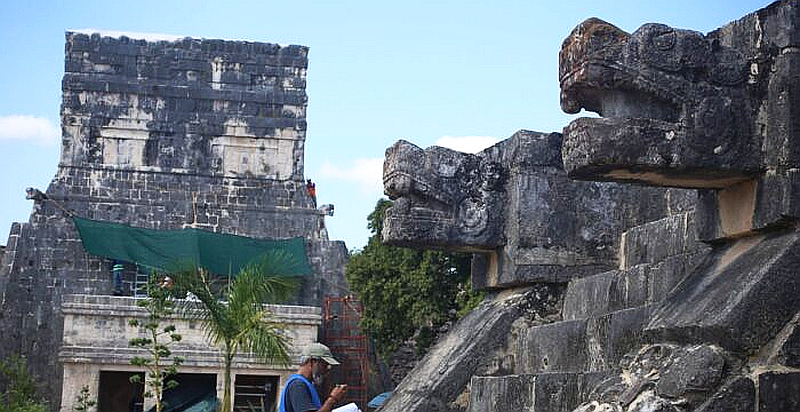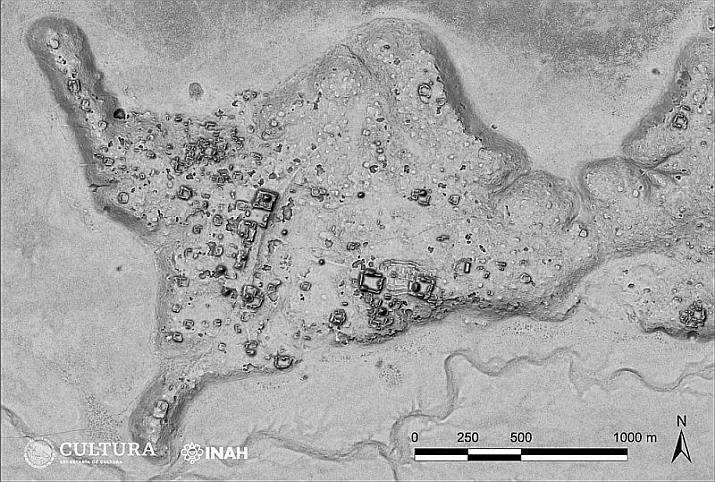
Calakmul, Campeche, Mexico – A team of researchers, led by Slovenian archaeologist Ivan Šprajc, recently discovered a monumental Ancient Mayan city within the Balamkú ecological reserve in the state of Campeche, around 1,100km from Mexico City, which they have named Ocomtún (‘stone column’ in Yucatec Mayan), due to the numerous cylindrical stone pillars scattered throughout the site.
The discovery of the thousand-year-old Mayan city is the result of the first field season of the project “Expanding the archaeological panorama of the Mayan Central Lowlands”, approved by the Archeology Council of Mexico’s National Institute of Anthropology and History (INAH) and coordinated by the expert from the Slovenian Academy of Sciences and Arts Research Center.
The initiative seeks to expand the knowledge of a vast area practically unknown to archaeology. It occupies 3,000 square kilometers of uninhabited jungle in the central part of the state of Campeche, bordered to the south by the Escárcega-Chetumal highway, to the east by the northern sector of the Calakmul Biosphere Reserve and to the north by the Chenes region.

Because aerial images of the terrain revealed the probability of finding archaeologic vestiges in the northwestern part of the territory, specifically an area in the Balamkú archaeological zone in the municipality of Calakmul, the team focused on the extreme north of that area from May until mid-June 2023.
The researchers trekked 60km through logging alleys covered with thick vegetation to discover the ancient site. Field inspections revealed numerous concentrations of pre-Hispanic structures that share several characteristics, in addition to having peculiarities that contrast with what is known from other parts of the Maya area.
“The biggest surprise turned out to be the site located on a ‘peninsula’ of high ground, surrounded by extensive wetlands. Its monumental nucleus covers more than 50 hectares and has various large buildings, including several pyramidal structures over 15 meters high,” Mr Šprajc said.
The nucleus is made up of three plazas dominated by imposing buildings and surrounded by several patio groups. “It is possible that the patios were markets or spaces destined for community rituals. In some cases, central altars and ball courts were included, but only future research will shed light on the functions of these groups, which represent a regional peculiarity,” he said. “Between the two main plazas there is a complex made up of various low and elongated structures, arranged almost in concentric circles,” he added.
“The site served as an important center at the regional level, probably during the Classic period (250-1000 AD). The most common ceramic types that we collected on the surface, and in some test pits, are from the Late Classic (600-800 AD); however, the analysis of samples of this material will offer us more reliable data on the sequences of occupation,” the team’s anthropologist explained.




